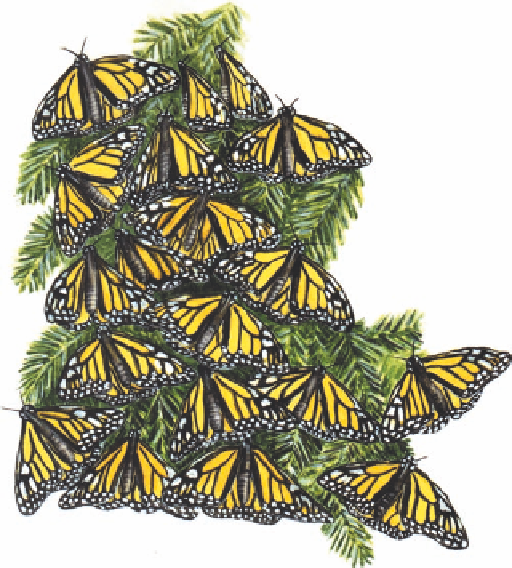Environmental Engineering Reference
In-Depth Information
Known species
1,412,000
Other animals
281,000
Insects
751,000
Fungi
69,000
Prokaryotes
4,800
Plants
248,400
Figure 3-2
Natural capital:
breakdown of
the earth's 1.4 million known species.
Protists
57,700
Some microbes in your nose prevent harmful bacteria
from reaching your lungs. Others are the source of dis-
ease-fighting antibiotics, including penicillin, ery-
thromycin, and streptomycin. Genetic engineers are
developing microbes that can extract metals from ores,
break down various pollutants, and help clean up
toxic waste sites.
Some microbes help control diseases that affect
plants and populations of insect species that attack our
food crops. Relying more on these microbes for pest
control can reduce the use of potentially harmful chem-
ical pesticides.
Populations, Communities, and Ecosystems
Populations of different species living and interacting
in an area form a community, and a community
interacting with its physical environment of matter
and energy is an ecosystem.
A
population
is a group of interacting individuals of
the same species occupying a specific area (Figure 3-3).
Examples include sunfish in a pond, white oak trees in
a forest, and people in a country. In most natural popu-
lations, individuals vary slightly in their genetic make-
up, which is why they do not all look or act alike. This
Figure 3-3
Natural capital:
population of monarch butterflies.
The geographic distribution of this butterfly coincides with
that of the milkweed plant, on which monarch larvae and
caterpillars feed.



